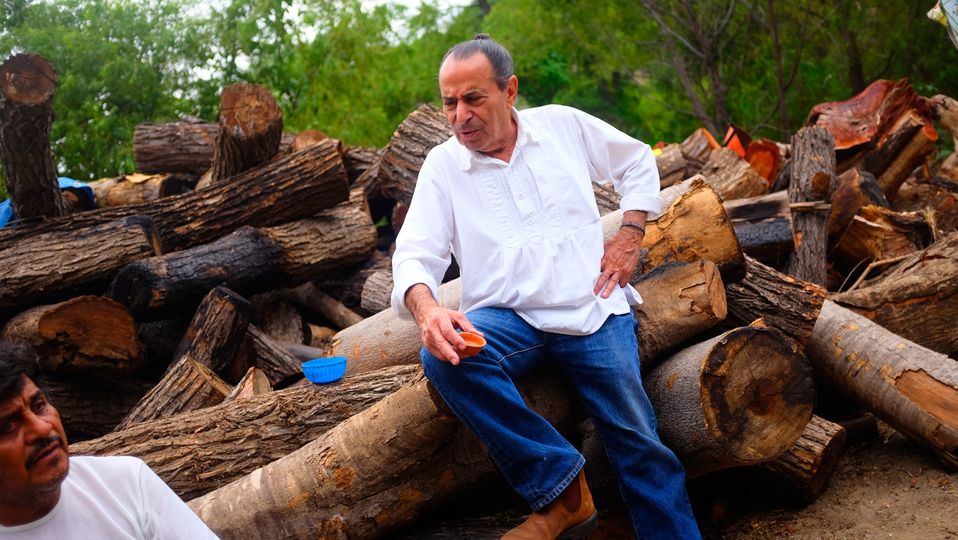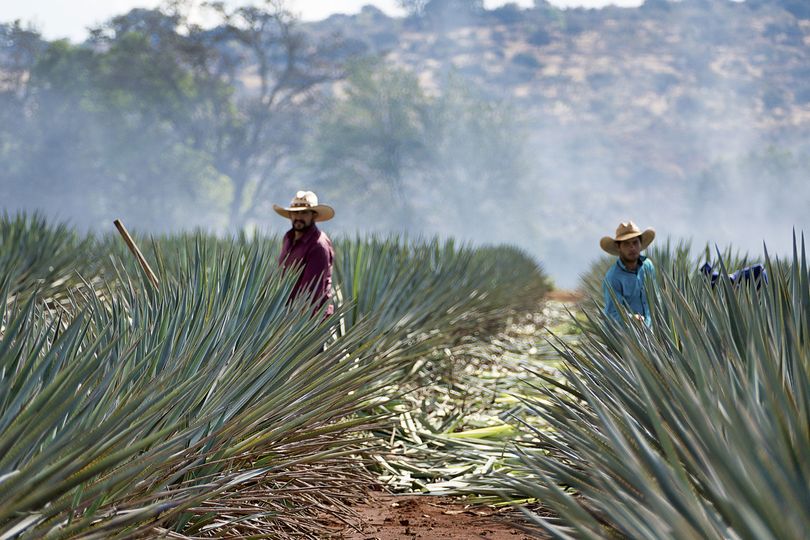Discovering the definitive mezcal
Tequila’s smoky cousin is becoming a star in its own right: here's how to track down one of the best of an emerging breed.

You’ll find quality mezcal in any good liquor store these days; but getting the real story behind the rising star of Mexican spirits takes research and dedication. In our case, that meant a journey of thousands of kilometres into the Mexican mountains. In a six-wheel-drive vehicle.
Unlike its close relative tequila, which is made only from the blue agave plant in strictly controlled fashion, mezcal may be made from dozens of different types of agave (although, technically, tequila is also a type of mezcal). Mezcals are generally more varied, with a smokier flavour imparted – especially when the heart of the agave plant is roasted in the traditional way, over an open firepit.
The production method for mezcal is the same as for most agave spirits: Harvest the agave and cut out the piña (the heart). This is split, steamed and then crushed to extract the sweet, caramel-like juice, which is fermented and finally distilled.
The father of modern mezcal
Our mission to discover the definitive mezcal at its Mexican origin begins with the inimitable Ron Cooper. An American artist, he has spent his money and life bringing small mezcal producers together and commercialising their spirits.
In doing so, he has managed to keep old-fashioned methods of production going and secure an income for mezcal-producing families. We benefit from the fact that the mezcals of his brand, Del Maguey, are probably the best and most authentic in the world.
So it was that we set off in a six-wheel-drive vehicle and headed into the mountains, over ridiculously bumpy and sometimes blocked roads to visit some of the palenques, or local distilleries, from which Ron gets his mezcals.
On such a journey you need to be handy mechanically, and equipped with off-road recovery gear, to have any chance of making it back to civilisation. Phone access? You’re kidding. The land is beautiful, crisp, dry and hot in summer, and mild in winter with little or no rainfall.
We visit nine families spread over thousands of kilometres and what strikes me is the reverence in which Cooper is held by these mezcaleros. He single-handedly commercialised their product, safeguarding both traditional production and the viability of these remote communities.
Deep in mountainous Mexico
Each of the nine families we visit are shy and aloof of strangers, yet always incredibly hospitable. The lined faces and gnarled hands show just how hard they work to survive. Most of the agave species grow in remote areas, mostly on steep hillsides, and have to be collected one by one.
The difficult terrain is matched only by the experience of the mezcaleros, deciding exactly which agave plants are ready for harvesting and which are not. Agaves take years to reach the point of maturity and it’s a real skill selecting the exact moment of harvest.
The piña (the agave heart, typically weighing around 50kg each) has to be freed by cutting all of the razor-sharp leaves off and then transported back to the palenque.
A bridge far enough
Many of the places we visit are in secret locations, but I can tell you about San Jose Rio Minas, where Don Roberto works exclusivelywith wild Papalome agave. We arrive at his abode around 5pm and have a wonderful dinner, a chicken mole, cooked in a large pot on an open fire, with plenty of mezcal and beer to accompany it.
Once night sets in, we drive about 20 km to the edge of a huge gorge with the Minas River hundreds of metres below. The only way to the palenque is over a rickety chain-link suspension bridge into the deep woods on the other side. The Milky Way overhead, hearts pounding in our chests, eyes closed, we make it across. And we are rewarded with some of the best spirit I have ever tasted.
Visiting a traditional palenque in a remote area is a step back in time. They usually do not have an oven to bake the hearts, so they use an open firepit. The amount of charring helps to determine the level of smokiness in the juice, which is then extracted via donkeys or horses pulling a huge millstone around a circular pit.
Stepping back in time
Fermentation is done in any type of vessel they can get their hands on. Once fermented they are distilled. None of the shiny copper stills used by modern distilleries; instead, rickety stills are fashioned from clay, fired by whatever wood or dried cacti they can find, with the cooled-down spirit running off through anything from an agave penca, a piece of cactus, bamboo, wood or sometimes metal half-pipe.
Absolutely everything is made by hand in a slow, hard and rewarding process that yields some of the best mezcals in the world. The upshot, in my mind at least, is that you can’t go wrong with any of Del Maguey’s mezcals, which are available in Australia through Vanguard Luxury Brands.
I love some of the single variety mezcals like Tobola, Tepextate, Tobaziche and Espadin, but they are not always easy to get. For a mezcal that is always available, I suggest Chichicapa, a Del Maguey mezcal made in the village of San Balthazar Chichicapa by Faustino Garcia Vasquez in the state of Oaxaca.
Trying to give an overall flavour profile to any agave spirit would be as wrong as doing the same to a bunch of single malt whiskies. The diversity of flavours is staggeringly varied, so all I can suggest is that you sip it pure, not in a cocktail or on ice, and learn what speaks to you.
Other agave spirits
In the CRT (Denomination of Origin Tequila) of Tequila, only the blue agave (Tequilana Weber) can be used. Raicilla is an agave spirit made in CRT Tequila, but not from blue agave, while bacanora is made in the very north of Mexico.
Sikua is made only in the state of Michoacán and is essentially mezcal from before Michoacán was approved as a Denomination of Origin for mezcal. Finally, Sotol is a distilled spirit made from the sotol plant (also known as Desert Spoon) and the plant is a relative of the agave plant.
So – fill your copita (an earthenware drinking vessel) and say: ‘Salud’ (or in Zapotec, Stigibeu).










Qantas - Qantas Frequent Flyer
29 Nov 2013
Total posts 475
Hi Franz,
I'm going to be in Monterrey next month - any tips on where to source Mezcal that isn't available in Australia?
29 Aug 2019
Total posts 5
There are literally hundreds of different Mezcals available in Mexico that are not brought into Australia. Stay away from the major, well-known brands and find some small, family producers. Can I recommend a particular one? Probably not, as I tend to try as many as I can whenever I'm in Mexico. One particular tyoe I can recommend for you to try and hunt down, is any cask strength version. There are 50% + Mezcal available, just not easily :-)
Good luck. Franz
Qantas - Qantas Frequent Flyer
29 Nov 2013
Total posts 475
Thanks for the great response Franz!
20 Oct 2015
Total posts 254
Great advice for the traveller, thanks Franz! I also like the idea of picking up the lesser known, more local spirits when it comes to say gin. You can get the big brands almost anywhere.
29 Aug 2019
Total posts 5
No doubt there will be a gin article sometime in the future :-)
Hi Guest, join in the discussion on Discovering the definitive mezcal